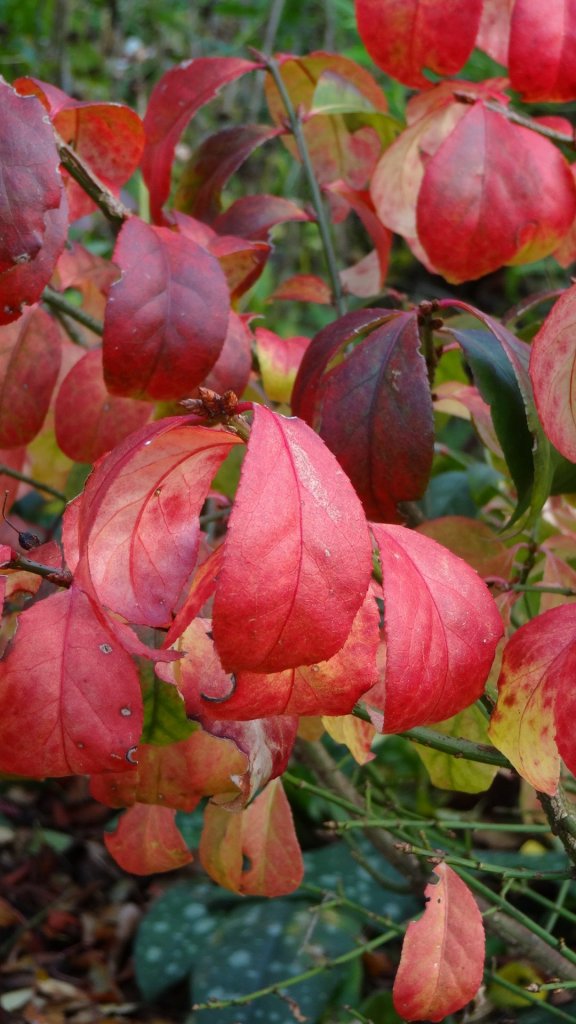
Winged Spindle
Fiery Autumn Foliage
Plant Profile: Euonymus alatus ‘Compactus’
This is one of the most reliable and stunning autumn foliage plants for Irish gardens. Many plants that produce autumnal colour can be disappointing some years, as autumnal colour is often dependent on a number of factors such as a good summer preceding and a drop in temperature in autumn, this plant however, does it every year. The plant featured here is a compact variety while the species is taller and wider.



1. Common Name: Burning Bush, Dwarf Winged Euonymus
2. Scientific Name: Euonymus alatus ‘Compactus’
3. Family: Celastraceae
4. Plant Type: Deciduous shrub
5. Native Range: Native to northeastern Asia, including China, Japan, and Korea.
6. Zone Adaptability: Adaptable to hardiness zones 4 to 8 according to USDA and zones H6 (hardy in all of UK and northern Europe -20°C to -15°C) according to RHS.
7. Ideal Conditions:
The Euonymus alatus ‘Compactus’ prefers full sun to part shade. It can survive in a range of soil types but does best in well-drained, fertile soils. It can tolerate dry conditions once it’s established.
8. Size: This dwarf variety generally grows to a height of 0.9 to 1.2 meters (3 to 4 feet) and a similar width.
9. Growth Rate: Moderate; this variety grows slower than the species, making it ideal for smaller spaces.
10. Bloom Time: Late spring to early summer.
11. Bloom Description: The blooms are small, inconspicuous, greenish-yellow flowers.
12. Leaf Description: The leaves are green and oval-shaped, turning a fiery red color in autumn. This plant is named for the striking, corky ridges that form on young stems.
13. Uses in Landscaping: With its compact shape and stunning fall color, it is ideal for hedges, borders, small gardens, or mass planting.
14. Maintenance: Low maintenance. Prune as needed in late winter to early spring.
15. Pests/Diseases: Generally disease-free. Occasionally, pests like aphids, scale insects, and euonymus scale may occur.
16. Other Features: Considered non-invasive and more environmentally friendly than the species because it produces fewer berries, thus less likely to spread.
17. Propagating: Propagation is by semi-hardwood cuttings taken in late summer or autumn.
18. Availability: Widely available in nurseries and garden centers, as well as online retailers.
19. Pollinators: Though the flowers are small, they can attract flies and other small insects. However, this plant is not known for its contribution to pollinator gardening.

While Viburnum plicatum ‘Watanabe’ lacks the pronounced layered growth of some of the varieties of this superb species, it differs in having a much longer flowering season.
Most of the varieties of V. plicatum flower for about six weeks in late spring/early summer, V. plicatum ‘Watanabe’ flowers for over six months!
In late autumn you get not just flowers but some autumnal colours in the foliage, together they make a beautiful show.
A hardy and easy to grow shrub, although it can in time achieve a sizeable state, pruning can be carried out every few years to limit the size.
.
